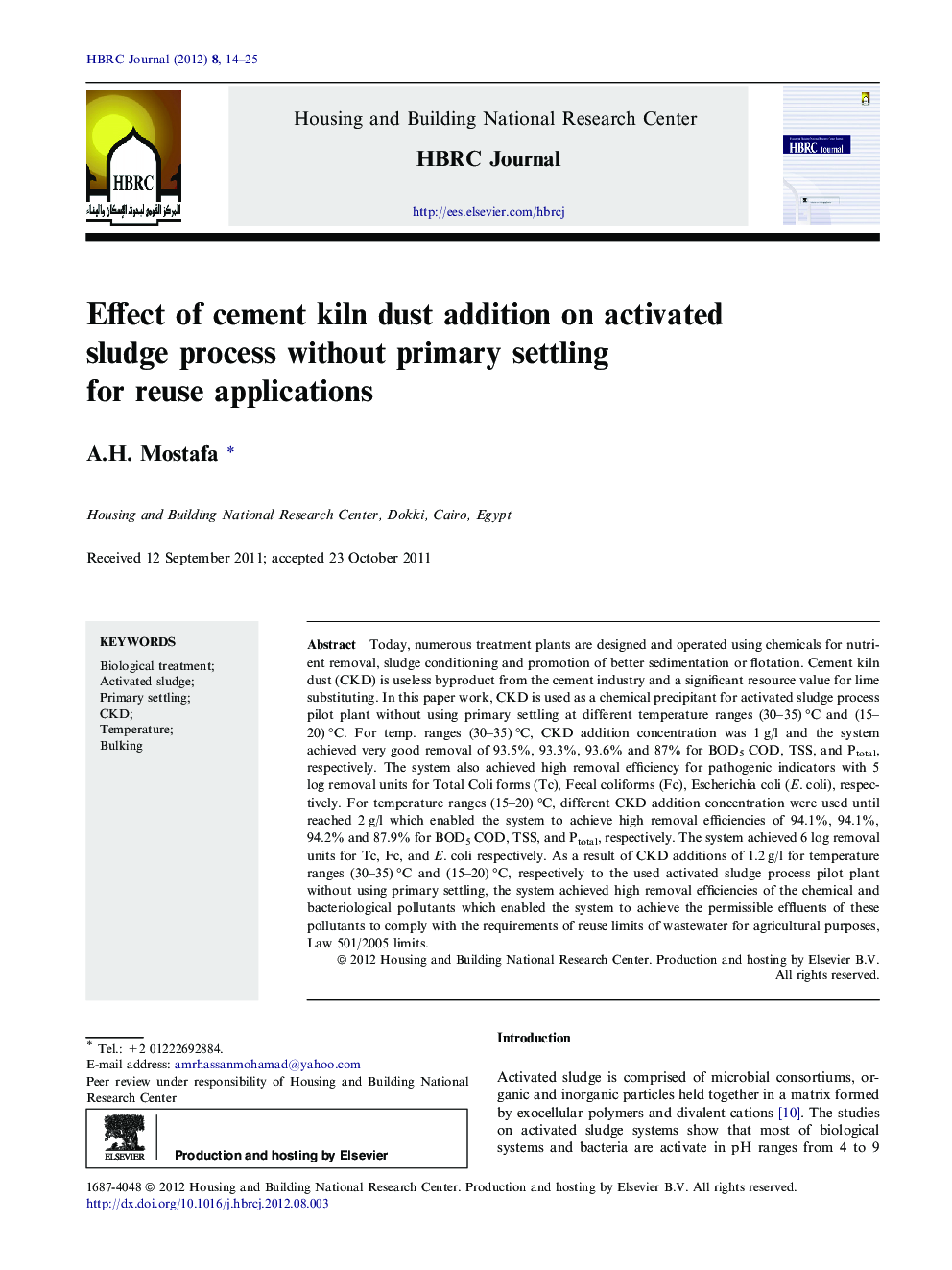| Article ID | Journal | Published Year | Pages | File Type |
|---|---|---|---|---|
| 274755 | HBRC Journal | 2012 | 12 Pages |
Today, numerous treatment plants are designed and operated using chemicals for nutrient removal, sludge conditioning and promotion of better sedimentation or flotation. Cement kiln dust (CKD) is useless byproduct from the cement industry and a significant resource value for lime substituting. In this paper work, CKD is used as a chemical precipitant for activated sludge process pilot plant without using primary settling at different temperature ranges (30–35) °C and (15–20) °C. For temp. ranges (30–35) °C, CKD addition concentration was 1 g/l and the system achieved very good removal of 93.5%, 93.3%, 93.6% and 87% for BOD5 COD, TSS, and Ptotal, respectively. The system also achieved high removal efficiency for pathogenic indicators with 5 log removal units for Total Coli forms (Tc), Fecal coliforms (Fc), Escherichia coli (E. coli), respectively. For temperature ranges (15–20) °C, different CKD addition concentration were used until reached 2 g/l which enabled the system to achieve high removal efficiencies of 94.1%, 94.1%, 94.2% and 87.9% for BOD5 COD, TSS, and Ptotal, respectively. The system achieved 6 log removal units for Tc, Fc, and E. coli respectively. As a result of CKD additions of 1.2 g/l for temperature ranges (30–35) °C and (15–20) °C, respectively to the used activated sludge process pilot plant without using primary settling, the system achieved high removal efficiencies of the chemical and bacteriological pollutants which enabled the system to achieve the permissible effluents of these pollutants to comply with the requirements of reuse limits of wastewater for agricultural purposes, Law 501/2005 limits.
